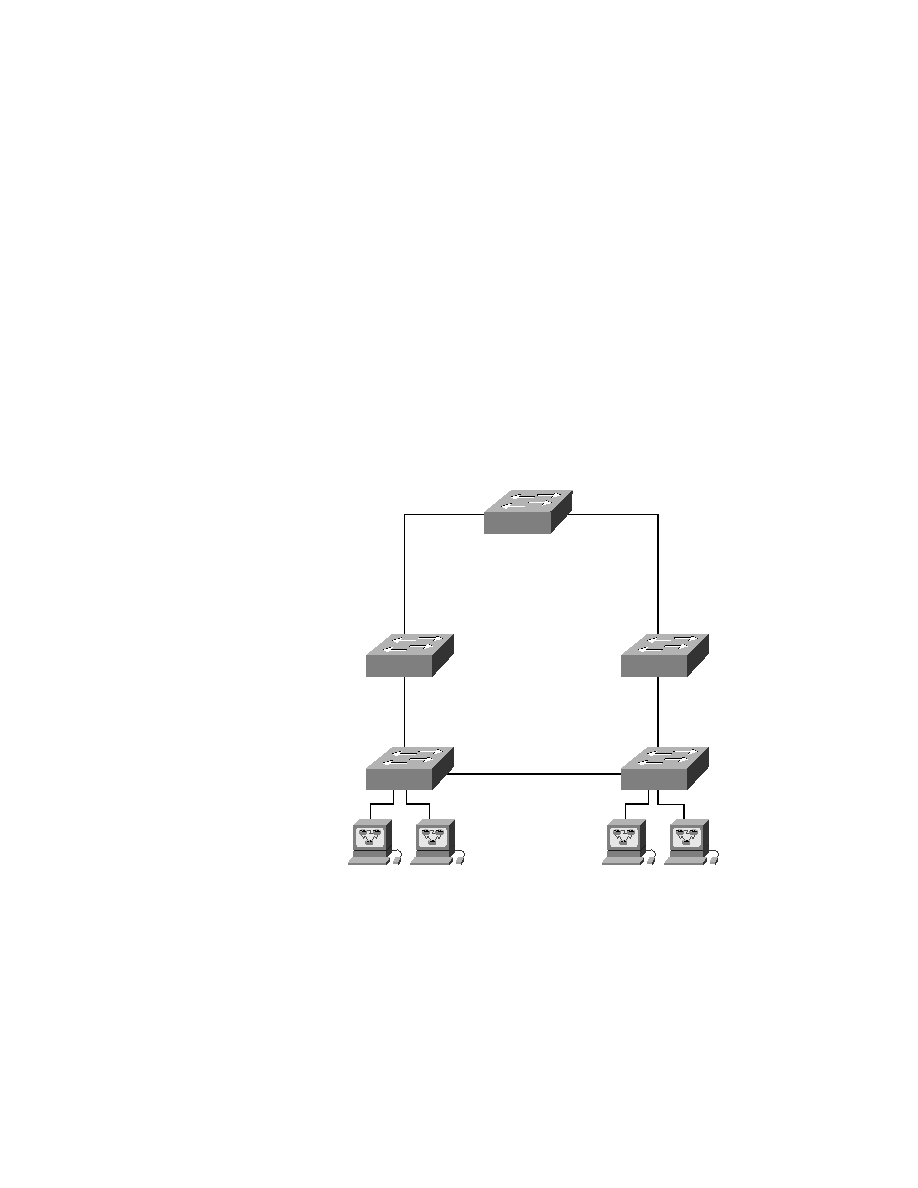
Spanning Tree Protocol (STP)
91
Spanning-Tree Example
So now comes D-Day--well, maybe not quite; you're not taking the test yet!
But it is time to begin using and not just reading about this stuff. It's impor-
tant to see how a spanning tree works in an internetwork, because it will
really help you understand it better. So in the section coming up, I'll give you
a chance to observe what you've learned as it takes place in a live network.
Check it out: In Figure 2.8, you can assume that all five switches have the
same priority of 32,768. But now study the MAC address of each switch. By
looking at the priority and MAC addresses of each device, you should be
able to determine the root bridge.
F I G U R E 2 . 8
Spanning tree example
Once you've established which switch has got to be the root bridge, look
at the figure again and try to figure out which is the root port on each of the
switches. (Hint: Root ports are always designated ports, which means they
will always be in forwarding mode.) Okay, next try and establish which of
the ports will be in blocking mode.
Figure 2.9 has the answers for each of the port states for each switch.
SwitchD
MAC = 0000.8c00.2101
SwitchE
MAC = 0000.8c00.9870
SwitchB
MAC = 0000.8c00.8955
SwitchC
MAC = 0000.8c00.1202
SwitchA
MAC = 0000.8c00.1201
Copyright ©2002 SYBEX, Inc., Alameda, CA
www.sybex.com
